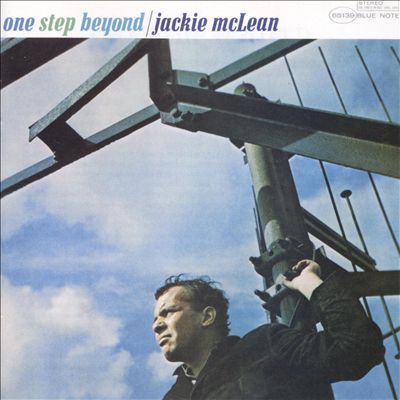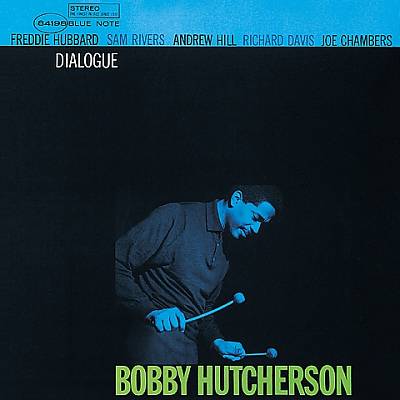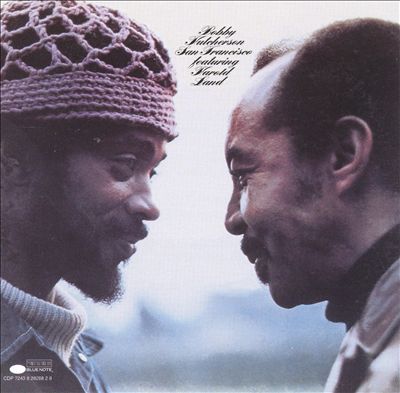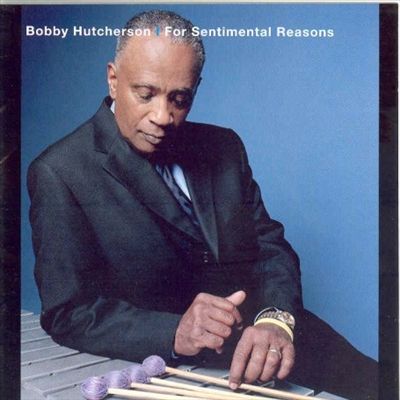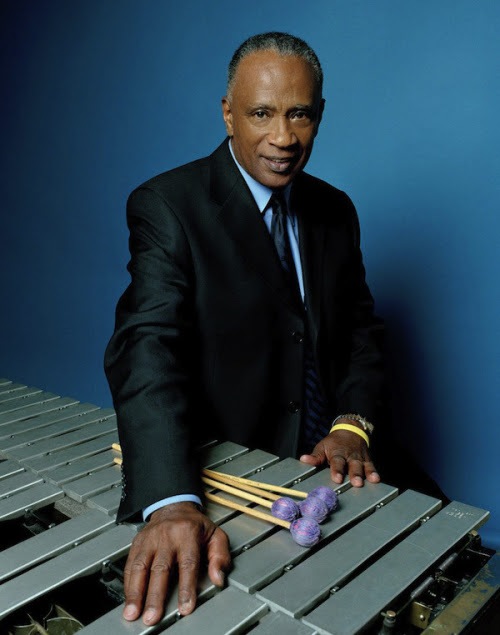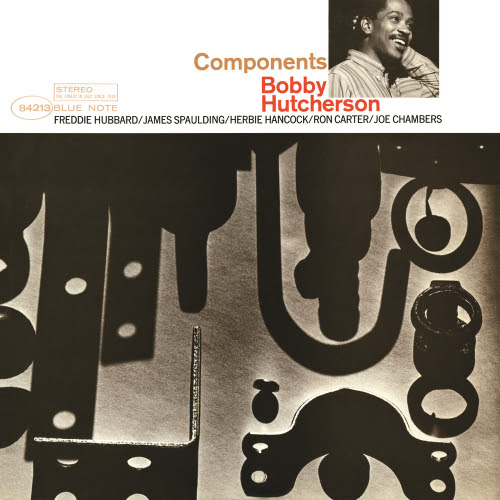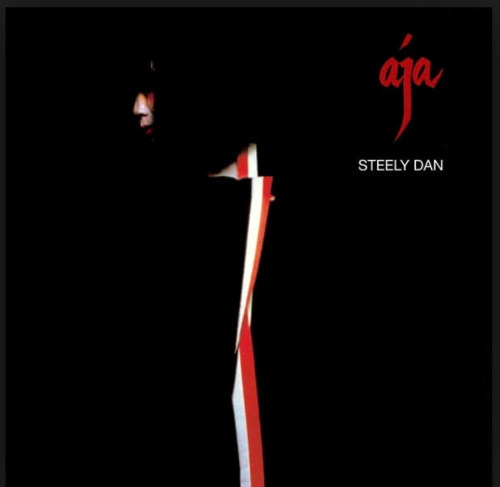AS OF JANUARY 13, 2023 FIVE HUNDRED MUSICAL ARTISTS HAVE BEEN FEATURED IN THE SOUND PROJECTIONS MAGAZINE THAT BEGAN ITS ONLINE PUBLICATION ON NOVEMBER 1, 2014.
ACCESS TO EACH ARTIST CAN BE FOUND IN THE 'BLOG ARCHIVE' (ARTISTS LISTED IN WEEKLY CHRONOLOGICAL ORDER) AND IN THE ‘LABELS’ SECTION (ARTIST NAMES, TOPICS, ETC.) ON THE RIGHT SIDE OF THE HOME PAGE. CLICK ON THESE RESPECTIVE LINKS TO ACCESS THEIR CONTENT:
https://soundprojections.blogspot.com/
https://soundprojections.blogspot.com/2016/09/bobby-hutcherson-1941-2016-legendary.html
PHOTO: BOBBY HUTCHERSON (1941-2016)

Bobby Hutcherson
(1941-2016)
Artist Biography by Steve Huey
Hutcherson had a coming-out party of sorts on McLean's seminal "new thing" classic One Step Beyond (1963), providing an unorthodox harmonic foundation in the piano-less quintet. His subsequent work with Dolphy was even more groundbreaking and his free-ringing, open chords and harmonically advanced solos were an important part of Dolphy's 1964 masterwork, Out to Lunch. That year, he won the Down Beat readers' poll as Most Deserving of Wider Recognition on his instrument.
Bobby Hutcherson
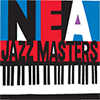
NEA jazz master Bobby Hutcherson is the most accomplished vibraphonist of his generation. He is a master of melodic, harmonic and rhythmic improvisation on both the vibes and the marimba. He has performed or recorded with nearly every major living jazz musician.
Born in Los Angeles in 1941, and raised in Pasadena, Hutcherson took a few piano lessons at an early age. But, he says, "I only played piano for my own enjoyment." Returned to the vibes after hearing the music of Milt Jackson. "One day I was walking down the street and I heard one of his records and that started it I have never tried to directly copy his style, but he's been a great influence on me…” He briefly studied the vibes with Dave Pike.
While still a teenager, Hutcherson worked around Los Angeles with such top musicians as Charles Lloyd and Curtis Amy. In 1960 he toured the country with a group led by AI Grey and BilIy Mitchell before settling in New York in 1961. He worked on and off with Jackie McLean for a year, quickly earning a reputation for his full, fresh sound on an instrument that was still a rarity in jazz. From the 1960's he played with some of the leading New York players, such as Hank Mobley, Archie Shepp, Eric Dolphy, Charles Tolliver, Herbie Hancock and Grachan Moncur, III. He began recording as a sideman during this period, appearing on records with Eric Dolphy, Dolly McLean, Herbie Hancock, Tony Williams, Dexter Gotdon, Andrew Hill, McCoy Tyner and Grant Green.
In 1964, at the age of 23, Hutcherson won the Downbeat critic's poll as "Talent Deserving Wider Recognition" on the vibes. The following year he played with Gil Fuller's big band at the Monterey Jazz Festival, and cut his first recording as a leader, Dialogue, on the Blue Note label. He continued to record with Blue Note for the next twelve years. During this time Bobby released two masterful recordings for Blue Note Records “Stick Up!” and “Dialogue” that would define the vibraphone as a jazz instrument for decades to come.
From 1967 to 1971 he led a quintet with Harold Land. Among those who belonged to the group as sidemen were the pianists Chick Corea, Stanley Cowell, and Joe Sample; the double bass players Reggie Johnson and Albert Stinson; and the drummers Donald Bailey and Billy Higgins.
Hutcherson moved to San Francisco in 1971 and won the International Jazz Critic's Poll as the "World's Best Vibest." During the '70s and '80s he performed and recorded regularly as a guest or co-leader, appearing on records with McCoy Tyner, Dexter Gordon and Sonny Rollins. He signed with Columbia in 1978 & and recorded the highly acclaimed “Highway One Conception: The Gift of Love” and “Un Poco Loco”. In 1979 he performed as part of an all-star jazz group at the historic Havana Jam Music Festival in Cuba. From 1981 he toured internationally and made recordings as a member of the Timeless All-Stars, with Harold Land, Curtis Fuller, Cedar Walton, Buster Williams and Billy Higgins.
In 1985, when veteran producer Orrin Keepnews launched his adventurous new jazz label, Landmark Records, the first release was Hutcherson's “Good Bait”. He has gone on to record “Color Schemes”, “In the Vanguard”, “Cruisin' the Bird”, “Ambos Mundos” and “Mirage” on the Landmark Label. In 1986 he was featured in the Warner Brothers release, Round Midnight along with Dexter Gordon and Herbie Hancock.
In 1994, on the Blue Note label, he recorded Manhattan Moodes, a duo recording with McCoy Tyner. This is a collaboration that has continued to wow Jazz Audiences for over a decade. In 2003 – he again recorded with McCoy Tyner on “Land of Giants” (Telarc Records). The tour that followed this recording along with Charnott Moffett on bass and Eric Harland on drums resulted in some of the most stunning music in recent jazz memory.
In 1999 Bobby Hutcherson recorded the critically acclaimed CD “Skyline” for Verve Records. Skyline's all-star alignment, with pianist Geri Allen, bassist Christian McBride, drummer AI Foster, and special guest saxophonist Kenny Garrett, exemplifies the high standards to which Hutcherson holds himself, as well as his penchant for testing himself in new waters.
Beginning in 2007 Bobby Hutcherson made a series of recordings with Kind of Blue Records. The first recording in the series titled “For Sentimental Reasons” was a recording of classic standards and showcased Bobby Hutcherson at his most melodic. Accompanying Bobby on this date were Renee Rosnes on piano, Dwayne Burno on bass, and Al Foster on drums. In 2010 Bobby Hutcherson released “Wise One” on Kind of Blue Records to wide critical acclaim. This recording was a reflection on the work of John Coltrane and featured Bobby’s longtime touring band from the San Francisco Bay Area with Joe Gilman on piano, Glenn Richman on bass, Anthony Wilson on guitar and Eddie Marshall on drums. In 2012 a scintillating live recording from Dizzy’s Club Coca-Cola titled “Somewhere In the Night” on Kind of Blue Records featuring Bobby Hutcherson with the Joey DeFrancsco Trio was released.
In 2014, Blue Note Records released an all-star collaboration titled “Enjoy The View” with Bobby Hutcehrson, David Sanborn, Joey DeFrancesco, & Bill Hart.
Bobby Hutcherson was named an NEA Jazz Master in 2010 and during that year he toured with fellow NEA Jazz Master pianist Cedar Walton in a quartet along with David Williams on bass and Eddie Marshall on drums to celebrate this honor. At the 2012 NEA Jazz Master awards Bobby Hutcherson performed in a Duo with Kenny Barron in tribute to Charlie Haden. Although now afflicted with emphazima, Bobby Hutcherson’s performance was spell bounding and is cited as the finest performance ever done at an NEA Jazz Masters ceremony. Today Bobby Hutcherson performs infrequently in the San Francisco Bay Area.
Of his approach to music and life today Bobby Hutcherson states: "I want to squeeze as much life as I can into the day and at the end of the day, when I'm exhausted, I say 'Well. I don't think I can do any more today, I’ll start again tomorrow',” "I'm in a different phase of my life right now and really enjoying where I am," Hutcherson says. "With music, I found something that I could devote the rest of my life to. If I hear people talking about how they want to make a record and make a lot of money, I want to say 'No, no, no, no. no. That's not what it's about. You're rich already, just to be involved in this music. How about the thrill of participating instead of vying for a certain position? Enjoy being tossed around in the sphere of life and love being tumbled around inside that bowl. Jockeying for position to get on top of that bowl is a dangerous proposition. I just want to be able to walk into a room, go about my business and leave, having caused the whole room to change."
Early Years
Bobby Hutcherson was born in Los Angeles, California on 27 January 1941. He grew up in Pasdena. Hutcherson was exposed to jazz from an early age, and his family had some connections to the local jazz scene. (His brother was a high-school friend of Dexter Gordon and his sister would later date Eric Dolphy.) He started studying piano as at age nine, but he found the formality of the training stifling. In his teens, Hutcherson decided to take up the vibraphone after hearing a Milt Jackson record. He studied informally with vibist Dave Pike, but, for the most part, he is self-taught on the instrument. Hutcherson's own musical career began when started playing local dances with his friend, bassist Herbie Lewis.
After high school, Hutcherson played with local jazz musicians Les McCann, Charles Lloyd, Paul Bley, Scott LaFaro, and Curtis Amy. (Hutcherson's first full-length album as a sideman was with Amy and Frank Butler, titled Groovin' Blue.) Later, after moving to San Francisco, Hutcherson joined an ensemble co-led by Al Grey and Billy Mitchell, and the band went on to record several albums in both of the leaders' names. During this time, Hutcherson frequently played chords using a four-mallet technique (now more commonly associated with vibist Gary Burton) because there was no pianist in the group. However, since the end of the 1960's, Hutcherson has only occasionally used this technique and has focused instead on more horn- like, linear playing. Around 1960 Hutcherson began working on an album as a leader for Dick Bock's Pacific Jazz label, but he abandoned the effort after recording only four songs. (These recordings have never been released.)
The Early and Middle Sixties
In 1961, Hutcherson traveled east with the Grey-Mitchell sextet for a run at Birdland in New York. He decided to stay. Hutcherson was acclaimed for his work with Grey, and he continued to record with him through 1963. More significantly, Hutcherson also began working and recording with two important "New Thing" artists, Eric Dolphy and Jackie McLean. Hutcherson's work with McLean yielded the first album that made many jazz fans and critics sit up and take notice of the new vibist on the scene. The 1963 album One Step Beyond featured an amazing quintet of McLean on alto sax, Grachan Moncur III on trombone, Tony Williams on drums, Eddie Khan on bass, and Hutch on vibes. Hutcherson was also featured on important sessions by Eric Dolphy, most notably on Out to Lunch. Over the next few years, Hutcherson continued working as a sideman on several other landmark jazz recordings. He made more albums with McLean (including the astounding Action), Grachan Moncur, Andrew Hill, Grant Green, Dexter Gordon, Joe Henderson, McCoy Tyner and others. Hutcherson was also playing in bands with Archie Shepp and Charles Tolliver during this time.
While recording his first album with Jackie McLean, Blue Note chief Alfred Lion offered Hutcherson a recording contract. (Hutcherson's relationship with Blue Note would last longer than any other artist's except Horace Silver's, ending only with the demise of the label in 1977.) Most critics consider his first album as a leader, Dialogue, to be one of his finest. (Hutcherson had recorded another album, subsequently released as The Kicker, before Dialogue, but it was not released until 1999.) Hutcherson went on to record a string of unbelievably strong records for Blue Note throughout the 1960's. His run of recordings rivals that of any other artist on the label during this legendary time. Most of these recordings feature the drumming and compositions of Joe Chambers, one of Hutcherson's key associates during the period.
The Bobby Hutcherson-Harold Land Quintet (1968-71)
In the late-Sixties, after moving back to California, Hutcherson formed a quintet with Harold Land. To this day, the dry-toned tenor saxophonist is probably most well-known for his work with the Clifford Brown-Max Roach Quintet in the middle 1950's. Despite the fact that Land (born 1928) was a generation older than Hutcherson, the two had similar musical visions, and their collaboration produced some amazing work. (Each artist recorded in their own name; Hutcherson on Blue Note and Land on Cadet and Mainstream.) Unfortunately, Hutcherson's partnership with Land coincided with the rise of fusion and jazz rock, and there wasn't much of a market for the subtlety and balance that quintet offered. Since work wasn't regular, the group used several musicians for the rhythm section, depending on the location of the gig. (On Hutcherson's recordings, the drum chair continued to be filled by Joe Chambers.) If the timing were different, the group might easily have been recalled as one of the finest small groups in jazz history. As it was, much of the work that the group recorded didn't even get released until a decade or more later (Spiral and Medina). Other recordings by the quintet, like the superb Peace-Maker (issued in Land's name), have never even been reissued on CD. (However, it was recently released on CD in Japan.).
The Seventies
During the Seventies, there were dramatic changes in the jazz scene. Since Hutcherson resisted electronics and (in general) shied away from fusion, his music was perceived by some as less relevant. It is also true that some of Hutcherson's recordings in the Seventies were less ambitious than they had been during the Sixties. Nonetheless, despite some inconsistency, Hutcherson continued to make challenging, thrilling records throughout the decade. In general, I think his work from this period is enormously undervalued.
In 1971, Hutcherson released Head On, a large band recording featuring the compositions of Todd Cochran, a student of classical music. Much of the music is very grand and exciting, almost uncategorizable. It seemed to build on the efforts of Hutcherson's earlier, unconventional large- ensemble recording, Now! (1969). Other excellent recordings from the decade include Cirrus, with the luminous, transcendent composition "Even Later" (one of Hutcherson's best) and The View from the Inside. Sadly, except for Now!, none of these have been issued on compact disc. (Unbelievably, Inner Glow, recorded in 1975, has never been released anywhere except in Japan. Fortunately, Mosaic Records plans to release several of Hutcherson's 70's LP in a "Select" set soon.) In the last few years, Blue Note has reissued some of Hutcherson's funkier Seventies work (San Francisco and Montara). This music is more immediately appealing, even if it retains some of Hutcherson's characteristic thoughtful intensity (such as on "Procession" on San Francisco).
In 1978, after Blue Note's last gasp, Hutcherson move to Columbia. His work there wasn't as strong as it had been (or soon would be again), although Un Poco Loco, his third and final release on the label is quite good. Hutcherson also continued to work as a sideman throughout the Seventies, though less far less frequently than in the previous decade. His most notable contributions were two excellent albums with McCoy Tyner (Sama Layuca and Together), as well as some fine work with Prince Lasha (released on Lasha's private label, Birdseye).
The Eighties
The 1980's saw a resurgence in more traditional, bop- based jazz forms, and this was good news for Bobby Hutcherson. In general, Hutcherson style of playing during this period is more conservative than in his earlier work. Here he's working in a more conventional mainstream-bop mode. But his playing is never any less convincing. The changes in his style sounds like a natural evolution.
In the early Eighties, at the instigation of Dutch producer and Timeless record label owner Wim Wigt, Hutcherson joined with Harold Land, Curtis Fuller (tb), Cedar Walton (p), Buster Williams (b), and Billy Higgins (d) to form the Timeless All-Stars. The group was outstanding. Instead of just blowing without giving much thought to arrangements or interplay (like many all-star bands), the group had a fine sense of balance, a real ensemble sound. One can hear echoes of groups like the Jazztet and even the MJQ in The Timeless All-Stars. Their first two recordings (It’s Timeless: Recorded Live at Keystone Korner and Timeless Heart) are probably their finest, but Hutcherson sounded completely at home whenever he recorded with them.
Starting in 1984, Hutcherson began recording for Orrin Keepnew's Landmark label. Hutcherson's Good Bait was the very first recording issued by the label. He went on to make a series of very fine recordings, the highlight of which was a live release, In the Vanguard. Unfortunately, the label has subsequently gone out of business and the rights to the recordings have changed hands a few times. Currently, Savoy owns them, but they have chosen not to reissue the discs.
In 1985, Hutcherson participated in the re-birth of the Blue Note label by playing at celebration concert at Town Hall in New York. His work is captured on compact disc One Night With Blue Note, Vol. 1. Footage of the concert has also been released on DVD. Later that same year, Hutcherson participated in the soundtrack recording to the film Round Midnight. Hutcherson also had a minor role in the film.
The Eighties also saw a dramatic uptick in Hutcherson's work as a sideman. [In 1981 alone, Hutcherson participated as a sideman on no less than eight recordings (for Sonny Stitt, Harold Land, Chico Freeman, Freddie Hubbard, Sonny Rollins, Pharoah Sanders, and McCoy Tyner). He also released his own Solo/Quartet LP in 1981.] Other highlights from the decade include Larry Vuckovich's Blue Balkan, McCoy Tyner's La Leyenda de la Hora, John Hicks' John Hicks, Frank Morgan's Reflections, Barney Kessel's Red Hot and Blues, and Andrew Hill's Eternal Spirit.
Recent Years
During the Nineties and into the present decade, Hutcherson has made fewer recordings, although he has kept up a steady touring schedule. One recent and exciting development in Hutcherson's musical life has been his involvement as a member of the San Francisco Jazz Collective. Beginning in 2004, the octet began touring every Spring. Each tour features compositions by members of the group, as well as the compositions of one "jazz giant," selected by Musical Director Joshua Redman. In 2004, the collective featured the music of Ornette Coleman. In 2005, it was John Coltrane. In 2006, the tour featured the music of Herbie Hancock. The group has released recordings from each of its tours, Inaugural Season Live and Live 2005: 2nd Annual Tour. (Both of them are excellent, although the group seems more at ease on the second set. I suppose that Hutcherson's familiarity with Hancock's music (and the man) will only serve to make the music from 2006 even better.
Along with the SF Jazz Collective recordings, here are a few more worth highlighting from the last fifteen years: Hutcherson's own Skyline, his collaboration with McCoy Tyner on Manhattan Moods, his work on the Various Artists' compilation Acoustic Masters II; plus his sideman work for Kenny Barron, Other Places and Abbey Lincoln, Wholly Earth.
Hutcherson's work remains entirely compelling. He brings something special every time he plays. In recent years, it's especially noticeable on his recordings as a sideman. If he doesn't play on a particular track, you miss him. When he does play, everyone sounds better.Music
Bobby Hutcherson, Vibraphonist With Coloristic Range of Sound, Dies at 75

Mr. Hutcherson’s career took flight in the early 1960s, as jazz was slipping free of the complex harmonic and rhythmic designs of bebop. He was fluent in that language, but he was also one of the first to adapt his instrument to a freer postbop language, often playing chords with a pair of mallets in each hand.
He released more than 40 albums and appeared on many more, including some regarded as classics, like “Out to Lunch,” by the alto saxophonist, flutist and bass clarinetist Eric Dolphy, and “Mode for Joe,” by the tenor saxophonist Joe Henderson.
Both of those albums were a byproduct of Mr. Hutcherson’s close affiliation with Blue Note Records, from 1963 to 1977. He was part of a wave of young artists who defined the label’s forays into experimentalism, including the pianist Andrew Hill and the alto saxophonist Jackie McLean. But he also worked with hard-bop stalwarts like the tenor saxophonist Dexter Gordon, and he later delved into jazz-funk and Afro-Latin grooves.
Growing up in a black community in Pasadena, Calif., Mr. Hutcherson was drawn to jazz partly by way of his older siblings: His brother, Teddy, had gone to high school with Mr. Gordon, and his sister, Peggy, was a singer who worked with the Gerald Wilson Orchestra. (She later toured and recorded with Ray Charles as a Raelette.)
Mr. Hutcherson, who took piano lessons as a child, often described his transition to vibraphone as the result of an epiphany: Walking past a record store one day, he heard a recording of Milt Jackson and was hooked. A friend at school, the bassist Herbie Lewis, further encouraged his interest in the vibraphone, so Mr. Hutcherson saved up and bought one. He was promptly booked for a concert with Mr. Lewis’s band.
“Well, I hit the first note,” he recalled of that performance in a 2014 interview with JazzTimes. But, he added, “from the second note on it was complete chaos. You never heard people boo and laugh like that. I was completely humiliated. But my mom was just smiling, and my father was saying, ‘See, I told you he should have been a bricklayer.’”
Mr. Hutcherson persevered, eventually working with musicians like Mr. Dolphy, whom he had first met when Mr. Dolphy was his sister’s boyfriend, and the tenor saxophonist and flutist Charles Lloyd. In 1962, he joined a band led by a pair of Count Basie sidemen, the tenor saxophonist Billy Mitchell and the trombonist Al Grey, and it brought him to New York City for a debut engagement at Birdland.
Mr. Hutcherson caught a break when Mr. Lewis, his childhood friend, came to town and introduced him to the trombonist Grachan Moncur III, who in turn introduced him to Mr. McLean. “One Step Beyond,” an album by Mr. McLean released on Blue Note in 1963, featured Mr. Hutcherson’s vibraphone as the only chordal instrument. From that point on, he was busy.
The first album he released as a leader was “Dialogue” (1965), featuring Mr. Hill, the trumpeter Freddie Hubbard and the saxophonist and flutist Sam Rivers. Among his notable subsequent albums was “Stick-Up!” (1966), with Mr. Henderson and the pianist McCoy Tyner among his partners. He and Mr. Tyner would forge a close alliance.
In the early ’70s Mr. Hutcherson bought an acre of land along the coast in Montara, where he built a house. He lived there with his wife, the former Rosemary Zuniga, whom he married in 1972. She survives him, along with their son, Teddy, a marketing production manager for the organization SFJazz; his son Barry, a jazz drummer; and two grandchildren.
After his tenure on Blue Note, Mr. Hutcherson released albums on Columbia, Landmark and other labels, working with Mr. Tyner, the tenor saxophonist Sonny Rollins and — onscreen, in the 1986 Bertrand Tavernier film “Round Midnight” — with Mr. Gordon and the pianist Herbie Hancock. From 2004 to 2007, Mr. Hutcherson toured with the first edition of the SFJazz Collective, an ensemble devoted equally to jazz repertory and the creation of new music. He was named a National Endowment for the Arts Jazz Master in 2010.
After releasing a series of albums on the European label Kind of Blue, he returned to Blue Note in 2014 to release a soul-jazz effort, “Enjoy the View,” with the alto saxophonist David Sanborn and other collaborators.
A version of this article appears in print on August 17, 2016, on page B14 of the New York edition with the headline: Bobby Hutcherson, 75, Jazz Vibraphonist With Luminescent and Coolly Fluid Style.
https://www.theguardian.com/music/2016/aug/17/bobby-hutcherson-obituary
Bobby Hutcherson obituary
by Richard Williams
August 17, 2016
The Guardian (UK)
On what would prove to be the last occasion he appeared in London, half a dozen years ago, the American vibraphonist Bobby Hutcherson left his audience at Ronnie Scott’s jazz club spellbound with a performance that demonstrated the eloquence of his improvisations on ballads. Every now and then, however, as the echoes of tunes such as For Sentimental Reasons and Nancy (With the Laughing Face) hung elegantly in the air, he would slip off stage to inhale from an oxygen cylinder to counter the emphysema that would shortly put an end to his public appearances.
Hutcherson, who has died aged 75, was one of the most important vibraphonists in the history of jazz. A prodigy who was already taking the stage with first-rank musicians in his native California at the age of 15, he spent his early 20s in New York, where he was quickly accepted into the Blue Note label’s distinguished repertory company, establishing his reputation on recordings alongside the saxophonists Jackie McLean and Eric Dolphy, the guitarist Grant Green, the pianists Herbie Hancock, McCoy Tyner and Andrew Hill, and others.
His dark, ringing tone added an emotional charge to any session and the degree of melodic and harmonic sophistication inherent in his improvisations made it hard to believe that he was almost entirely self-taught. If that supreme artistry with a ballad was a late-flowering facet of his talent, then a certain lyricism had always been implicit in his playing, even in the more austere and challenging environment of the 1960s, when the music was characterised by strategic dissonance and asymmetry.
While still in his teens, Hutcherson demonstrated his precocity on recordings with the pianist Les McCann and the saxophonist Curtis Amy. Soon the trombonist Al Grey, a former member of Count Basie’s band, asked him to join the quintet he co-led with the saxophonist Billy Mitchell. A two-week engagement in San Francisco eventually led to a trip to New York, where Hutcherson decided to stay in order to test himself against the stiffest competition in the jazz world.
Through the trombonist Grachan Moncur III he landed a gig with the quintet of McLean, which included the 16-year-old drummer Tony Williams, soon to become famous with Miles Davis. Between 1963 and 1965, while sometimes driving a cab to supplement his income, Hutcherson appeared on McLean’s One Step Beyond and Destination … Out, Moncur’s Evolution, Dolphy’s Out to Lunch and Hill’s Judgment, all albums that mapped new territory for jazz. His own early Blue Note recordings, Dialogue and Components, demonstrated a generous willingness to favour the work of composers whose writing he admired, such as Hill and the drummer Joe Chambers, over his own well-turned compositions.
In 1965, with the saxophonist Archie Shepp’s group, he made his first appearance at the Newport jazz festival. It was already apparent that he had taken a place in the lineage of the vibraphone after Lionel Hampton, who introduced the instrument to jazz in the 30s, and Jackson, a master of bebop techniques whose sound became the defining element of the immensely popular Modern Jazz Quartet.
A minor drug infringement for smoking marijuana in 1967, and the consequent withdrawal of his police permit to work in New York nightclubs, led Hutcherson to return to California, where he would be based for the rest of his life. In 1969 he appeared as a bandleader in They Shoot Horses, Don’t They?, Sydney Pollack’s film about dance marathons in the Depression. There was a featured role for him, alongside Dexter Gordon, in Round Midnight, Bertrand Tavernier’s 1986 film about expatriate American jazz musicians in Paris.
He continued to record for a variety of labels and appeared alongside his friend Harold Land, the saxophonist, in a band called the Timeless All Stars. In 1970 the success of his jazz-funk tune Ummh enabled him to buy an acre of land 20 miles south of San Francisco, on which he built a house for his family. From 2004 to 2008 he was a member of the SF Jazz Collective, whose younger musicians, including the trumpeter Nicholas Payton and the saxophonist Joshua Redman, valued the company of an elder of such charm, wisdom and manifest integrity. His influence can be heard in the playing of many younger exponents of the vibraphone, such as Stefon Harris, Warren Wolf and Lewis Wright.
He was married first, in 1960, to Beth Buford, whom he met in high school and with whom he had a son, Barry. The marriage ended in divorce. In 1972 he married Rosemary Zuniga, with whom he had another son, Teddy. Rosemary and his sons survive him.
• Robert Hutcherson, vibraphonist and bandleader, born 27 January 1941; died 15 August 2016
https://en.wikipedia.org/wiki/Bobby_Hutcherson#
Bobby Hutcherson
Robert Hutcherson (January 27, 1941 – August 15, 2016) was an American jazz vibraphone and marimba player. "Little B's Poem", from the 1966 Blue Note album Components, is one of his best-known compositions.[1][2][3][4] Hutcherson influenced younger vibraphonists including Steve Nelson, Joe Locke, and Stefon Harris.[3][5][6][7]
Biography
Early life and career
Bobby Hutcherson was born in Los Angeles, California, to Eli, a master mason, and Esther, a hairdresser. Hutcherson was exposed to jazz by his brother Teddy, who listened to Art Blakey records in the family home with his friend Dexter Gordon. His older sister Peggy was a singer in Gerald Wilson's orchestra. Hutcherson went on to record on a number of Gerald Wilson's Pacific Jazz recordings as well as play in his orchestra. Hutcherson's sister personally introduced Hutcherson to Eric Dolphy (her boyfriend at the time) and Billy Mitchell. Hutcherson was inspired to take up the vibraphone when at about the age of 12 he heard Milt Jackson with Thelonious Monk, Percy Heath, Kenny Clarke and Miles Davis playing "Bemsha Swing" on the Miles Davis All Stars, Volume 2 album (1954).[8] Still in his teens, Hutcherson began his professional career in the late 1950s working with tenor saxophonist Curtis Amy and trumpeter Carmell Jones, as well as with Dolphy and tenor saxophonist Charles Lloyd at Pandora's Box on the Sunset Strip.[3][9][10]
He made his recording debut on August 3, 1960, cutting two songs for a 7-inch single with the Les McCann trio for Pacific Jazz (released in 1961), followed by the LP Groovin' Blue with the Curtis Amy-Frank Butler sextet on December 10 (also released by Pacific Jazz in 1961). In January 1962, Hutcherson joined the Billy Mitchell–Al Grey group for dates at The Jazz Workshop in San Francisco and Birdland in New York City (opposite Art Blakey). After touring with the Mitchell–Grey group for a year, Hutcherson settled in New York City (on 165th street in The Bronx) where he worked part-time as a taxi driver, before fully entering the jazz scene via his childhood friend, bassist Herbie Lewis.[9][10][11]
Blue Note Records
Lewis was working with The Jazztet and hosted jam sessions at his apartment. After hearing Hutcherson play at one of Lewis' events, Jazztet and Jackie McLean band member Grachan Moncur III felt that Hutcherson would be a good fit for McLean's group, which led to Hutcherson's first recording for Blue Note Records on April 30, 1963, McLean's One Step Beyond.[9] This was quickly followed by sessions for Blue Note with Moncur, Dolphy, Gordon, Andrew Hill, Tony Williams and Grant Green in 1963 and 1964, later followed by sessions with Joe Henderson, John Patton, Duke Pearson and Lee Morgan.[10] In spite of the numerous post-bop, avant-garde, and free jazz recordings made during this period, Hutcherson's first session for Blue Note as leader, The Kicker (recorded in 1963 but not released until 1999), demonstrated his background in hard bop and the blues, as did Idle Moments with Grant Green.
Hutcherson won the "Talent Deserving of Wider Recognition" award in the 1964 Down Beat readers' poll, and Blue Note released Hutcherson's Dialogue in 1965.[12] The 1966 record Stick-Up!, featuring Joe Henderson, Herbie Lewis, and Billy Higgins, was the first of many recorded sessions Hutcherson made with McCoy Tyner throughout their careers. Stick-Up! was also the only album out of ten Hutcherson recorded as leader for Blue Note between 1965 and 1969 which did not feature drummer Joe Chambers or any of Chambers' compositions.[2][10] Spanning the years 1963 to 1977, Hutcherson had one of the longest recording careers with Blue Note, second only to Horace Silver's.[1]
Return to the West Coast
Hutcherson lost his cabaret card and taxi driver's license in 1967 after he and Joe Chambers were arrested for marijuana possession in Central Park,[13] so he moved back to California, but continued to record for Blue Note.[9] This return to the West Coast resulted in an important partnership with Harold Land, with whom Hutcherson recorded seven albums for Blue Note, featuring a rotating lineup of pianists such as Chick Corea, Stanley Cowell, and Joe Sample, and usually Chambers on drums. The Hutcherson-Land group broke up in 1971, and that same year Hutcherson won the title of "World's Best Vibist" in the International Jazz Critics Poll.[2][12] After the release of Knucklebean in 1977, Hutcherson recorded three albums for Columbia Records in the late 1970s.
Land and Hutcherson reunited in the early 1980s for several recordings as the "Timeless All Stars," a sextet featuring Curtis Fuller, Cedar Walton, Buster Williams, and Billy Higgins which recorded four albums for the Dutch label Timeless Records.[1] After switching between several labels in the early 1980s for his solo material, Hutcherson recorded eight albums for Landmark Records from the 1980s into the early 1990s, and continued to work steadily as a sideman during this time. His recorded output slowed somewhat during the past few decades, although he did release albums for Atlantic and Verve in the 1990s, three for the Swiss-based label Kind of Blue in the 21st century, and continued to tour.
Later years
In 2004, Hutcherson became an inaugural member of the SFJAZZ Collective, featuring Joshua Redman, Miguel Zenón, Nicholas Payton, Renee Rosnes, and Eric Harland, among others. He toured with them for four years, and made an appearance at the SFJAZZ Center's grand opening in 2013.[9] His 2007 quartet included Renee Rosnes on piano, Dwayne Burno on bass and Al Foster on drums. His 2008 quartet included Joe Gilman on piano, Glenn Richman on bass and Eddie Marshall on drums. In 2010 he received the lifetime Jazz Master Fellowship Award from the National Endowment for the Arts[14] and performed at Birdland in a quintet featuring Gilman, Burno, Marshall, and Peter Bernstein. 2014 saw Hutcherson return to Blue Note Records with Enjoy the View, recorded at Ocean Way Studios in Hollywood with Joey DeFrancesco, David Sanborn, and Billy Hart. The quartet performed four sold-out shows at the SFJAZZ Center in February, prior to the album's release.[15][16]
Acting career
Hutcherson's intermittent acting career included an appearance as the bandleader in They Shoot Horses, Don't They? (1969), and as Ace in Round Midnight (1986).[17]
Personal life
Hutcherson has a son, Barry, from his first marriage to Beth Buford. Hutcherson wrote the waltz "Little B's Poem" for Barry in 1962.[3] Due to the success of "Ummh" from the album San Francisco, one of Hutcherson's few entries in the jazz fusion style, he was able to buy an acre of land on which he built a house in Montara, California, in 1972.[2][9] That same year, he married Rosemary Zuniga, a ticket taker at the Both/And club in San Francisco.[7] The couple had a son, Teddy, who is a production manager for SFJAZZ. Hutcherson attended an African Methodist Episcopal Church as a youth and converted to Catholicism later in life.[3]
A heavy smoker all his life, Hutcherson had suffered from emphysema since 2007.[18] He died from the condition in Montara, California, on August 15, 2016.[19][20][21]
Style and critical reception
Bobby's thorough mastery of harmony and chords combined with his virtuosity and exploratory intuition enabled him to fulfill the function that is traditionally allocated to the piano and also remain a voice in the front line. He did this to perfection in the bands of Dolphy, McLean, and Archie Shepp. His approach to the vibes was all encompassing; it was pianistic in the sense of melody and harmony and percussive in rhythmic attack and placement. He brought a fire and a passion back into the instrument that had been lost since the prime of Lionel Hampton. He was firmly rooted in the bebop tradition, but constantly experimenting and expanding upon that tradition.
I love playing with Bobby. He's an exceptionally gifted jazz improviser.... It's always a lot of fun to play with him, always enlightening, emotional as well as intellectually challenging. Bobby is a very honest person. He couldn't play the way he does without that honesty. He has an innocence that's childlike in a way. He's a great player and a great person, and that helps boost humanity a little bit.
AllMusic contributor Steve Huey stated that Hutcherson's "free-ringing, open chords and harmonically advanced solos were an important part of Dolphy's 1964 masterwork Out to Lunch!", and called Dialogue a "classic of modernist post-bop", declaring Hutcherson "one of jazz's greatest vibraphonists". Huey went on to say: "along with Gary Burton, the other seminal vibraphone talent of the '60s, Hutcherson helped modernize his instrument by redefining what could be done with it – sonically, technically, melodically, and emotionally. In the process, he became one of the defining (if underappreciated) voices in the so-called "new thing" portion of Blue Note's glorious '60s roster."[2]
In his liner notes to the 1980 release of Medina, record producer Richard Seidel (Verve, Sony Masterworks) wrote that "of all the vibists to appear on the scene contemporaneous with Hutcherson, none have been able to combine the rhythmic dexterity, emotive attack and versatile musical interests that Bobby possesses." Seidel concurred that Hutcherson was "part of the vanguard of the new jazz developments in the Sixties. He contributed mightily to several of the key sessions that document these developments."[22]
Interviewed by Jesse Hamlin for a piece on Hutcherson in the San Francisco Chronicle in 2012, collaborator Joshua Redman said that "We talk a lot about how music expresses universal values, experiences and feelings. But you don't often witness that so clearly and so profoundly as you do with Bobby. His music expresses the joy of living. He connects to the source of what music is about."[3]
In an April 2013 profile for Down Beat magazine, Dan Ouellette wrote that "Hutcherson took the vibes to a new level of jazz sophistication with his harmonic inventions and his blurring-fast, four-mallet runs... Today, he's the standard bearer of the instrument and has a plenitude of emulators to prove it." Ouellette quoted Joey DeFrancesco as saying "Bobby is the greatest vibes player of all time.... Milt Jackson was the guy, but Bobby took it to the next level. It's like Milt was Charlie Parker, and Bobby was John Coltrane."[9]







